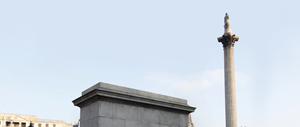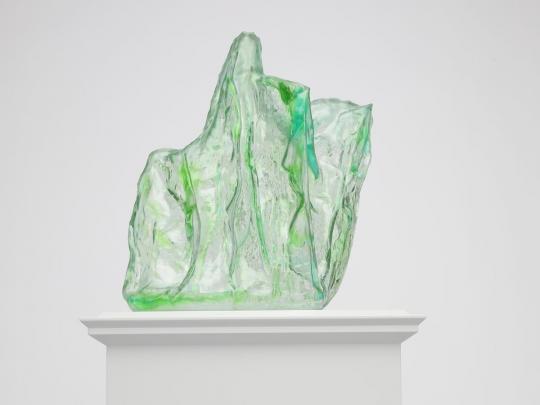
The next artworks that will take pride of place on the Fourth Plinth in Trafalgar Square have been chosen. Lady in Blue by Tschabalala Self will occupy one of the highest profile public art spaces in world from 2026, while Untitled by Andra Ursuţa will be installed from 2028.
Lady in Blue by Tschabalala Self pays homage to a young, metropolitan woman of colour inspired by a desire to bring a contemporary ‘everywoman’ to Trafalgar Square. Made of bronze, the work will be patinated with Lapis Lazuli blue, a rare and refined pigment that has been used since antiquity.
Untitled, a shrouded equestrian statue - translucent, pale green. The rider and horse will remain anonymous, their distinguishing features concealed under the folds that drape over them. Hovering at the edge of visibility, the work is a yet-to-be-uncovered or an already cancelled public monument. A ghost of history and a parody of itself.
They were chosen from an incredibly exciting shortlist of seven international artists from America, Argentina, Romania and the UK. The winning artworks were chosen by the Fourth Plinth Commissioning Group, chaired by Ekow Eshun. The public were invited to have their say, and the shortlist received more than 10,000 votes, showing how much the public value this opportunity to influence our public spaces. The two works will be unveiled in 2026 and 2028 respectively, following on from Improntas (Imprints) by Teresa Margolles, which will be in place from September 2024. The current Fourth Plinth sculpture is Antelope by Samson Kambalu.
Tschabalala Self, Lady in Blue
This sculpture pays homage to a young, metropolitan woman of colour, who could be just one of many Londoners today. She is a symbol of our shared present and future ambitions – the aspiration of equity through representation, recognition, and action. A world where all global citizens are appreciated for their unique contributions.
It is inspired by a desire to bring a contemporary ‘everywoman’ to Trafalgar Square. A walking icon of the everyday, rather than an idol representing the adulation of one. Made of bronze, the sculpture will reference the square’s existing monuments, but here patinated with the blue colour of Lapis Lazuli. This rare and refined pigment has been used since antiquity in North Africa, the Middle East, and Europe. It has a global historical significance and was used by artists such as Titian and Vermeer.
Self is best known best known for her depictions of female figures using paint, fabric, and discarded pieces of her previous works.
Born in New York, United States of America, in 1990, she lives and works in New York.

Andra Ursuţa, Untitled
A shrouded equestrian statue - translucent, pale green. The rider and horse will remain anonymous, their distinguishing features concealed under the folds that drape over them. Hovering at the edge of visibility, the work is a yet-to-be-uncovered or an already cancelled public monument. A ghost of history and a parody of itself.
The sculpture’s greenish colour recalls an uncanny slime - ectoplasm - an imaginary excretion of formless matter that threatens ordered, consensual reality. Slime green: shorthand for the unnatural, the unhealthy, for that which has the potential to contaminate: Mountain Dew served in a phosphorescent Uranium glass. An unnatural colour that emits its own luminosity, this shade of green exists in opposition to natural light. Brought out of the lugubrious domain of fantasy and into public space, its sinister connotations will soften into responses to the weather. In clear conditions, the sculpture will seem more transparent, while an overcast sky will enhance its otherworldly glow.
The equestrian statue’s literal transparency means that the plinth will be both occupied and empty. A palpable omission embodying multiple histories - of the processes that lead to the distillation of ideas into images, of public sculpture, and of commemorative representation - the sculpture also points towards an uncertain future. An artifact of a hyperfragmented, paranoid time when public space, consensus, and community continue to dissolve, the work aims to contain irreconcilable narratives without attempting to rewrite them. It is an object that embodies radical acceptance of our deeply flawed present. The identity of its mounted subject is unimportant or, in relation to the other statues in the square, no longer important.
Born in Salonta, Romania, in 1979, she lives in London and New York.

ArtDependence Magazine is an international magazine covering all spheres of contemporary art, as well as modern and classical art.
ArtDependence features the latest art news, highlighting interviews with today’s most influential artists, galleries, curators, collectors, fair directors and individuals at the axis of the arts.
The magazine also covers series of articles and reviews on critical art events, new publications and other foremost happenings in the art world.
If you would like to submit events or editorial content to ArtDependence Magazine, please feel free to reach the magazine via the contact page.